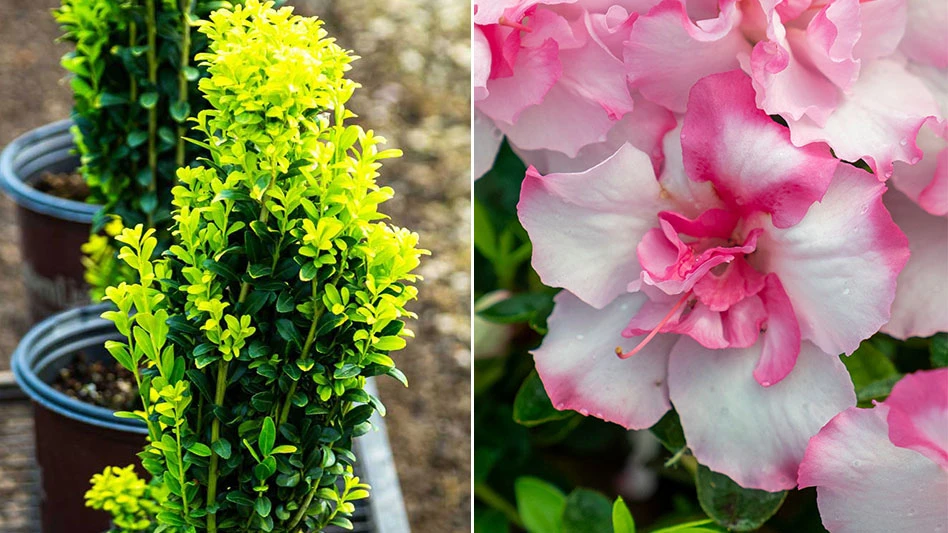 Refrigeration is a process of removing heat from a product to slow its metabolism to reduce respiration, water loss, microorganism development and ethylene production. Proper refrigeration involves both temperature and humidity control.
Refrigeration is a process of removing heat from a product to slow its metabolism to reduce respiration, water loss, microorganism development and ethylene production. Proper refrigeration involves both temperature and humidity control.
Coolers are necessary in many types of greenhouse operations. For most greenhouse crops, a temperature just above freezing is desirable. For every 18ºF rise in temperature, the rate of chemical reaction in a crop increases two to three times. Cut flowers, for example, deteriorate three times faster in a cooler at 41ºF than at 30ºF.
Humidity changes can also be as important as temperature in influencing the life of a crop. Most crops store best at 80 percent or higher relative humidity. A crop stored at 50 percent relative humidity will lose moisture five times as fast as one stored at 80 percent. This can affect product weight, flower and leaf quality, and cutting viability.
Cooler sizes
The smallest coolers are usually reach-in box units in florist shops used to display cut flowers. More typically, walk-in coolers measuring from about 6-by-6 feet and larger are used by commercial growers to store bulbs, cuttings, tree seedlings, seeds and greenhouse vegetables.
Portable coolers up to about 12-by 12-by-9 feet are available from several manufacturers. Larger units are manufactured in sections that are assembled on site. Special designs are required for room and building size units.
To keep the size of the refrigeration unit to a minimum and operating costs down, several inches of insulation are used to enclose the box. Polystyrene and polyisocyanurate foam are commonly used because they have a high insulating value and low permeability to moisture.
Direct expansion refrigeration systems are the most common type used today. High pressure refrigerant flows through the expansion valve and “boils” under reduced pressure within the evaporator. Heat in the cooler is absorbed by the evaporating refrigerant, resulting in cooling of the space surrounding the evaporator coil. Freon refrigerant, which is common in older units, is now being replaced by new, high-efficiency materials that are environmentally friendly.
Sizing the cooler
The cooler needs to be sized to accommodate the largest quantity of crop that will be placed in it at any time. Calculations on volume should be based on the stacking of the containers, space for access and air space for circulation of the cool air.
The size of the refrigeration unit is determined by four factors: 1.) field heat in the crop, 2.) heat of respiration, 3.) cooler heat gain and 4.) equipment load. These are calculated values in Btu per hour.
The largest heat load is the heat in the crop when it is placed in the cooler. Crops such as bulbs, tomatoes and cucumbers contain considerable field heat. Other crops such as cut flowers, vegetative cuttings, seeds and lettuce have less mass and less heat.
The quantity of product placed in the cooler each day, its temperature and the desired rate of cooling determine the field heat load. To lower this large heat load, precooling may be done. For cut flowers, portable precoolers that draw refrigerated air through the packed boxes are used. For vegetables, hydrocooling and vacuum cooling are common. Precooling is usually done in less than one hour.
The heat of respiration released by a crop also adds to the load. Respiration heat production decreases during cool-down and stabilizes after the storage temperature is reached.
Heat gain from conduction through the cooler walls and ceiling is usually low if the unit is well insulated. Except from air exchanges when the door is open, a tight cooler will have very little convective heat gain. In small coolers, only lights create equipment heat gain. In large room coolers, fork lifts, pumps and motors may add to the heat load.
Adding the four loads plus a service factor, usually 10 percent, gives the total cooling load (usually expressed in tons per hour). One ton of refrigeration is equal to 12,000 Btu per hour.
Use small circulating fans to keep a uniform temperature and air flowing past the containers to remove respiration heat.
Cooler applications
Cut flowers. A key is to start with mature, high-quality flowers and cool them as soon as possible after cutting. After grading, the plants should be placed in a preservative solution to improve longevity. Sanitation should be practiced to reduce disease problems and ethylene injury.
Bulbs, roots and tubers. These are usually stored for several months from harvest until they are ready to be sold or forced the following spring. Most bulbs require a warm, hardening period after harvest to obtain floral development. They can then be stored.
Greenhouse vegetables. Lettuce and greens are the most common crops that require storage. Usually a crop is harvested, packaged and placed in storage until an adequate quantity is available for shipment. A temperature of 34ºF and 98 percent relative humidity will retain quality and shelf life. Pink-red greenhouse tomatoes are usually stored at 50ºF-55ºF.
John Bartok Jr. is faculty emeritus, University of Connecticut, Department of Natural Resources Management and Engineering, jbartok@rcn.com.

Explore the July 2009 Issue
Check out more from this issue and find your next story to read.
Latest from Greenhouse Management
- On the rebound
- A winning gameplan for spring
- Veseris expands in turf and ornamental with acquisition of Tessman and Lynde companies
- BioTherm launches Ultimate Grower Climate Control System
- Jess Lyga joins Bailey sales team
- Jimmy Toledo
- Green Gear: Work boots and long-range WiFi hub
- Pantone announces its 2025 Color of the Year





